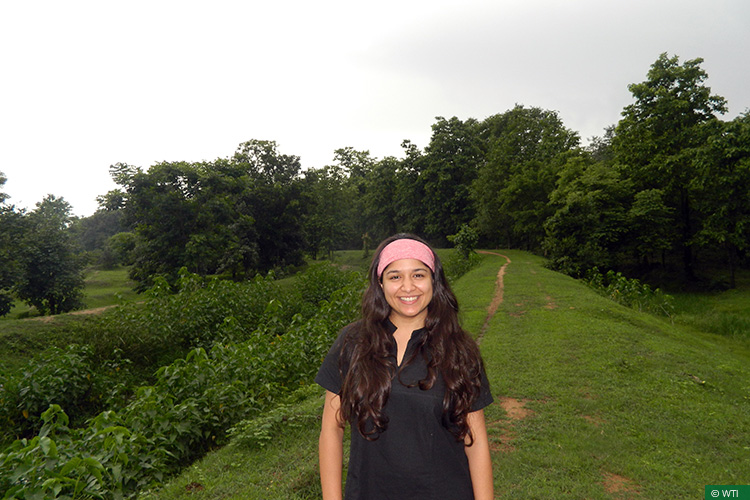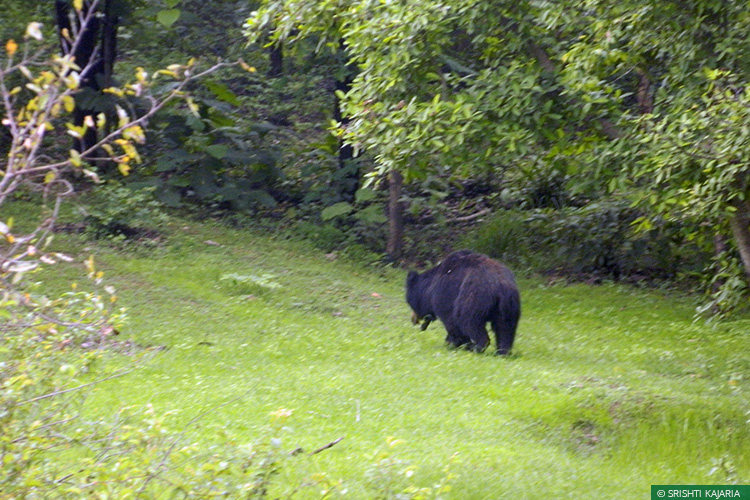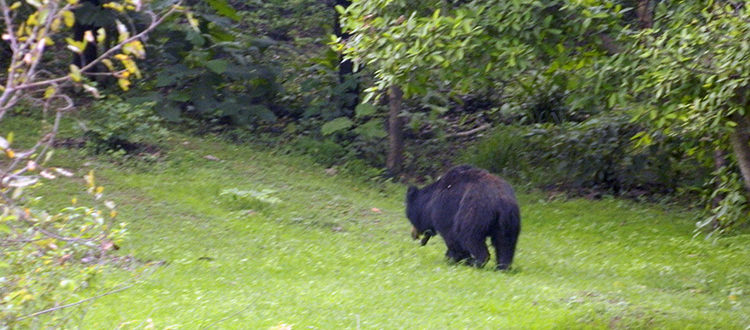An Outsider in the Jungle
By Shrishti Kajaria
Inspired by Jane Goodall who went to Gombe Stream National Park with a little more than a diary and binoculars, I found the courage to work in a discipline that was foreign to me. Drawing inspiration from the work of Frans de Waal who added a humane perspective to primatology, I aspired to study animal conservation from a psychological perspective. My internship at Wildlife Trust of India (WTI) in July 2017 gave me an opportunity to combine both my interests – animal conservation and psychology. It gave me an opportunity to peek into the real world and explore a diversity that textbooks did not offer.

After interning for a few weeks at the WTI office, I figured out my area of interest and a rough outline of the project that I wanted to work on. In order to carry out my research I travelled to the Gondia district of Maharashtra, to villages located in the tiger corridor between Navegaon National Park and Nagzira Wildlife Sanctuary. I was a first-time solo traveller on a long overnight train journey. My rucksack contained some clothing, food and heaps of excitement tinged with a little nervousness. After reaching the Goregaon field station I found it difficult to settle in mentally. My unease was partly because I was a long way away from home, and partly because I was the only amateur amongst a group of experienced and knowledgeable biologists and sociologists. Although intimidating at first, this wonderful team soon became my support system.
My field project entailed an assessment of the attitudes of village children towards wildlife and would contribute to WTI’s awareness campaign in the region. The tiger corridor often witnessed conflict between the local residents and the wild animals. I was interested in exploring how that conflict influenced a child’s attitude towards wildlife. The assessment was divided into two parts: the first part ascertained their knowledge about wild animals by showing them pictures of diverse animals and asking basic questions about animal diet and habitat. The second part was an interview with questions about forest use, practices etc.
After my first day in the field I returned dejected having faced a language barrier. It also dawned on me that my questions were not directly linked to the lives of the children I was interviewing. I reworked the questionnaire accordingly over the next few days – for instance, instead of posting a broad question about biodiversity conservation, I asked about the possible alternatives to firewood (since many children accompanied their parents to the forest to collect firewood). I also presented pictures of endemic and exotic animals to test their knowledge of wildlife. Some of the results were surprising. For example, I offered pictures of both herbivores and carnivores to the children and asked them to choose one. To my surprise, a majority of the children chose the deer and the cow over the tiger and the leopard, often justifying their choice by reasoning that herbivores did not attack cattle or eat humans. That simple test hinted at a deep-rooted fear of and perhaps even a dislike towards carnivores. Furthermore, it highlighted a stark difference between the perceptions of urban citizens who vouch for wildlife conservation and the maintenance of the ecological balance, and village communities that share territory with wildlife and for whom the survival and safety of cattle comes first.
A majority of the children chose the deer and the cow over the tiger and the leopard, often justifying their choice by reasoning that herbivores did not attack cattle.
While writing down my observations, I remembered Valmik Thapar’s lines1: “It was probably Project Tiger’s biggest error that little had been done for the people in all these years. If wildlife is to survive, man and nature must find a harmonious balance”. The forest is important to the villagers as it helps supplement their meagre income. Living in a cosmopolitan city, poverty is discussed and debated but the gravity of the situation is often not realised. I was taken aback at the beginning of the trip during my first visit to village homes. I can still vividly picture their kutcha houses made of cow dung and mud, with domestic animals and human beings sharing the same living space. Spending an evening in one of these houses made me realise the real hardships and consequences of poverty. Another takeaway from this experience was to be sensitive towards the differences that exist in our society so that while designing interventions, we took into account the needs of the people which might not be obvious at first glance.
I also visited several beautiful forests. Once, in the evening, we were passing through a seven-kilometre-long stretch which was dense and dark, and all we could hear was the rustle of the leaves on the ground. As darkness fell, I saw what I thought was a reflection of my phone’s notification light. It turned out to be a firefly! Before I realised what was happening, the forest had been lit by fireflies as if illuminated by hundreds of fairy lights. Even today, I can vividly recall the brightly lit and twinkling night forest every time I close my eyes. After experiencing the forest at night, I didn’t expect any daytime experience to be as stunning. However, a few days later, we stopped at the Chulban dam. The sun was shining brightly after a bout of rain, and so the forest was lush green and bright. The ruffle of leaves, chirping of birds, and the sound of water were disturbed occasionally by the call of an animal from the forest. I spent the evening spellbound, unwilling to disturb the melody of the forest, captivated by the sheer beauty around me.

As we moved ahead from the dam to the village, we were greeted by an unexpected sight: a sloth bear. My bizarre reaction – that of running closer to the bear to have a “better look” – shocked my companions, but what an experience it was! As I stood there clicking pictures of the bear, I felt both vulnerable and connected to nature. The unexpected sighting and the excitement of that adventure filled my head with so many thoughts that my first reaction after reaching our destination was to document my experience. The sparse village lights were supplemented by my phone’s torch as I sat scribbling in my diary.
My short internship with WTI left me intoxicated and craving for more. I learned that the real world is interdisciplinary where the knowledge of just one field may not suffice.
Amongst so many short visits to the forest, I distinctly remember the last one where I was accompanied by three other team members, one of whom was a wildlife expert. The forest seemed even more interesting when I saw it through his perspective. He could spot and name the birds which were perched on trees far away, and identify frog species while expertly manoeuvring his bike. It was as if I was experiencing a chapter from EO Wilson’s books, which are usually so detailed. Before this visit I had only admired the greenery, the tall trees, the animals, and the serenity without knowing their correct names or their ecological roles.
My short internship with WTI left me intoxicated and craving for more. I learned that the real world is interdisciplinary where the knowledge of just one field may not suffice. I also learned the importance of being persistent in my efforts and not shying away from asking for help when required. I found comfort in an unfamiliar setting, peace in a lively environment, and perspective in an entangled ecosystem. My journey to the forests of central India was more than just a thousand kilometre transit. It was an adventurous and maturing experience for me as I got the opportunity to work on an interesting project, explored the forest from different perspectives, and peeked into the lives of people who live in and around the forest.
The author is a student of Ashoka University, Haryana. She interned with WTI’s Vidarbha Tiger Project in the Gondia district of Maharashtra.









